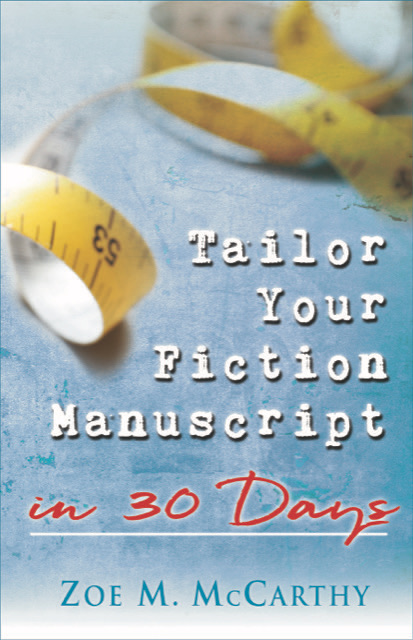
It’s my pleasure to introduce editor Vie Herlocker, my guest today while I’m on a writing sabbatical. Please learn more about Vie after her post. Here’s Vie:
Often during an edit, I’ll type the time-worn words, “Show, don’t tell.” But what exactly moves writing from telling to showing? And just how can writers create this thing calling showing?
Janet Burroway, professor at Florida State University, in Edition 9 (Edition 10 released in April 2019) of her book, Writing Fiction, A Guide to Narrative Craft, describes the challenge of showing on the written page:
Fiction tries to reproduce the emotional impact of experience. And this is a more difficult task, because unlike the images of film and drama, which directly strike the eye and ear, words are transmitted first to the mind, where they must be translated into images. (p. 21, Ninth Edition)
Burroway encourages writers to move beyond the words and the thoughts the words produce, focusing instead on the resulting experience the reader feels. She shares five writing tools to create experiences—some of which you may have not considered as a counterpart to showing:

- Significant details (specific, definite, concrete, particular)
- A detail is definite and concrete when it appeals to the senses. These bring life to fiction.
- Avoid naming (telling) emotions: Mary was embarrassed. Show details: Mary turned her head, but not before the wave of red swept from her neck to her forehead.
- Comparison (some work, some don’t)
- Simile and metaphor are the most used comparison tools. Simile uses like or as in comparison: Her smile was like sunrise to my soul. A metaphor does not: Her smile was sunrise to my soul.
- Avoid clichés, far-fetched metaphors, and mixed metaphors.
- Active Voice
- Burroway states that linking verbs (to be) “invite complements that tend to be generalized or judgmental.” Ex: The teen was irritating.
- But active verbs lend themselves to significant details. Ex: The teen’s constant slurping his soda and crunching the ice during the movie irritated me.
- Prose Rhythm
- Match the cadence of the sentences with the action of the scene. For example, a series of short, clipped sentences fail to show a raven soaring on gentle summer thermals; likewise, a long, rambling sentence can’t capture the feeling of a tango competition.
- Use strong verbs, instead of relying on adverbs, to enhance rhythm.
- Mechanics
Well, that’s a start on a few ways to show instead of tell. Were you surprised to see rhythm and mechanics included? I’ve come to the conclusion that all the components of fiction overlap and depend upon each other. In a follow-up post, I’ll explore more techniques to move from telling to showing.

Vie Herlocker is the associate editor for Surry Living Magazine in Mt. Airy, NC. Her experience includes ten years as executive editor of Sonfire Media/Taberah Press and six years reviewing books for Blue Ink Reviews.
Vie is a member of the Christian Editor Connection, PEN, ACFW, ACW, and WordWeavers. She received the 2017 Christian Editors Network Excellence in Editing Award for a nonfiction book. In 2018, a book she edited won the Selah Award for YA fiction at Blue Ridge Mountains Christian Writers Conference.

Vie was also the editor for Tailor Your Fiction Manuscript in 30 Days.


 RSS - Posts
RSS - Posts



Vie’s special touch as an editor has been a tremendous blessing in my life. This blog post is a fresh example of her expertise and comes at a great time in my writing life. I’m grateful to Zoe and to Vie for these tips.
I agree, Shirley. She did a wonderful job on my Tailor Your Fiction Manuscript in 30 Days.
Thank you, Shirley and Zoe! I loved working with both of you.
Vie’s special touch is a result of the special care and time she puts into each piece of writing she edits. I love to read what she writes, especially when she shares moments in her life,
Couldn’t agree more, Jeannie.
Thank you, Jeanne. I appreciate your sweet words.You are an awesome writer.
Thanks, Vie, for reviewing those timeless tips plus including illustrations of how to show instead of tell. I resonate with good writing when I read it, but I struggle with including specific details and fresh metaphors when writing. Is that because I’m an auditory learner?
Patti, I am not sure that being an auditory learner plays into this. You stated that you resonate with good writing when you read it–so unless you are referring to listening to an audiobook, you are resonating with the written word as well. I know that you are a playwright–with quite a few excellent scripts published traditionally–and produced in churches. Scripts don’t need to rely on the specific details as much as a book or article because you include stage directions, stage settings, and character costume,props, and body language to provide those details. Perhaps if you took your non-script WIP and asked: What stage directions would I include here? What notes to the costume designer would I have? What body language would each character exhibit that makes them unique? Etc. Then add those details to your manuscript. I highly recommend the Emotion Thesaurus (and all the other Thesauruses in this collection) to help put words to show your characters instead of telling. I will try to place a link to that resource in a following comment. (But if I can’t place one here, just check Amazon.)
Hi Patti and Vie, I like the idea of thinking of what I might put in a script note for a play character, then show them in a story.
Patti, here is a link to the Emotion Thesaurus that I mentioned.
https://www.amazon.com/Emotion-Thesaurus-Writers-Character-Expression/dp/0999296345/ref=tmm_pap_swatch_0?_encoding=UTF8&qid=1561828094&sr=8-1-spons
Ah, this is my writing morning, and I started it with a good-read: Vie’s post. I have already gained much from her expertise and been blessed by her friendship. Here, I am reminded that strong verbs are better than adverbs, a point I need to beware of and work on. And I need to be mindful of showing, not naming, emotions. I do have the Emotion Thesaurus. Guess I ought to dig it out, huh?
Thanks, Vie and Zoe
I love my emotion thesauruses. Especially the one on wounds.
Ginny, thank you for visiting the blog and for your sweet comment. I think we all need those reminders. It’s easy to slip into telling, but showing creates virtual experiences for our readers.